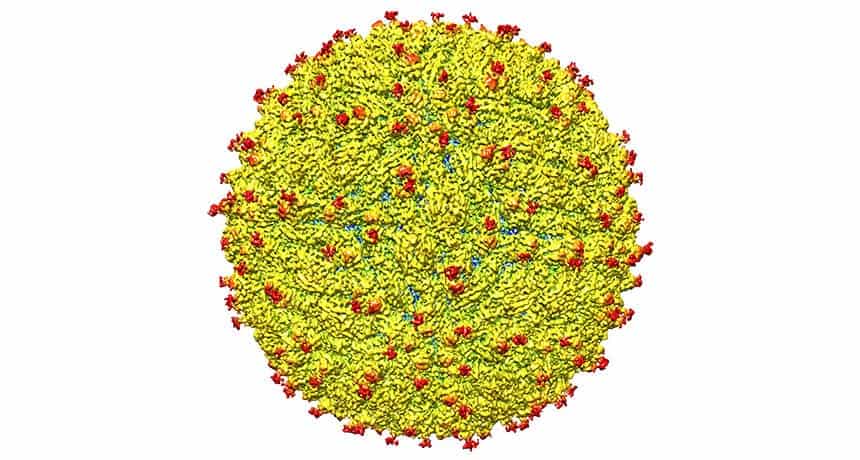Researchers have been racing to image the structure of the Zika virus whose outbreak in the Americas is causing malformations in newborns and autoimmune diseases. A team at Purdue University in West Lafayette finally cracked the code, revealing a virus very much akin to the dengue and West Nile viruses.

The golf-shaped structure was determined using cryoelectron microscopy. This technique allowed Michael Rossmann of Purdue and colleagues to create a sharp 3-D image of the virus. You can even see the sugars protruding from proteins in Zika’s shell like little-red doorknobs.
[ALSO SEE] Why Zika causes birth defects
It’s these knobs that may help the Zika virus attach and infect human cells. So, this latest effort couldn’t be more welcomed. “This certainly gives us great hope that we will be able to find a vaccine or antiviral compounds,” Rossmann said.
A couple weeks back, many publishers accounting for thousands of journals released all Zika-related articles for free. This coupled with the painstacking efforts scientists all over the world are pitching in gives hope that a vaccine might be developed soon.


